Photography by Matthew Randazzo
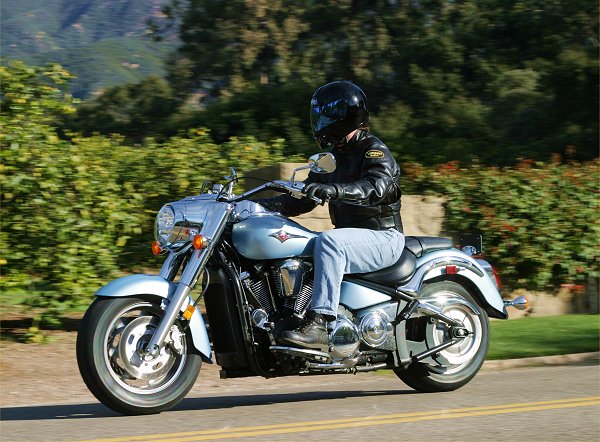
After spending two days riding, and testing, Kawasaki’s new Vulcan 2000 near Santa Barbara, California, I sat down to write this riding impression. I pulled out my book of Moto Journalist’s Clichés, and started to thumb through it looking for just the right way to start this story. I rejected some of the more tried-and-true phrases like “there is no substitute for cubic inches”, “torque to me baby”, and “the v-twin beat is sweet”. Although all true, and perhaps even apropos for an introduction to the Vulcan 2000 riding experience, none of them seemed quite right. Then, I stumbled on the perfect phrase. . . . There’s a new sheriff in town.

It seems that just a few years ago, Kawasaki rediscovered an important part of its heritage. You see, occasionally Kawasaki likes to shake things up. Every once in a while, it comes from left field. Throws a sucker punch at the competition. They did it with three-cylinder, two-stroke street bikes when I was a kid (displacing 500cc, and then 750cc . . . yeah, I am that old), and, later, with an in-line 900cc DOHC four-stroke machine that knocked Honda’s CB750 for a loop. It seems Kawasaki has done it again.
Several months ago, the rumor mill started to rumble about a 2000cc v-twin cruiser on its way from Kawasaki for 2004. The rumors were almost right, but the engine was even larger. Displacing 2053cc (125.3 cubic inches), the 2004 Vulcan 2000 has the largest capacity v-twin engine ever put into production by a major manufacturer. With 141 foot pounds of torque at 3,000 rpm and 116 horsepower at 5,000 rpm, the Vulcan 2000 out powers many small automobiles. It is also carefully designed to be smooth and usable in the delivery of that power.
In order to reduce engine height and lower the center of gravity, Kawasaki utilized pushrods to actuate the four valves per cylinder. With 123.2mm of stroke, overhead cams would have made a big engine unacceptably bigger.
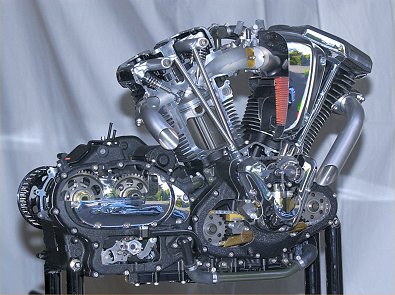
A single-pin crankshaft helps the Vulcan 2000 voice that classic v-twin sound, while dual counterbalancers and rubber engine mounts keep those huge explosions in each cylinder head from unduly disturbing the rider’s comfort.
A five-speed transmission transfers power to the rear wheel through a traditional-looking belt drive system. On/off throttle transitions are remarkably smooth given the massive power pulses, and Kawasaki achieved this in several ways.
The fuel injection system is controlled by a sophisticated ECU, and utilizes 46mm throttle bodies and sub-throttle valves (similar to Kawasaki’s newest sportbikes). This system mimics, in some respects, a CV carburetor, smoothing power production and largely eliminating the abruptness of older-style fuel injection systems.
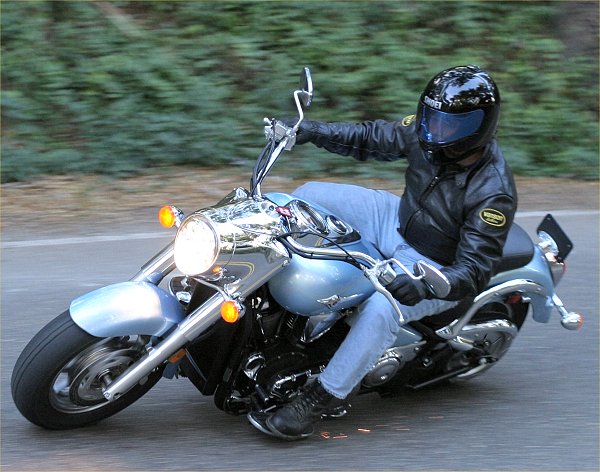
With a form of cush drive on the output shaft spinning the belt, and the belt itself smoothing throttle transitions, those giant power pulses arrive at the rear wheel in a predictable, controllable and smooth fashion. A pretty neat trick.
When you first ride the Vulcan, it is the engine you are thinking about. You are understandably concerned about having 141 foot pounds of torque controlled by your right wrist. You think the Vulcan 2000 might spin its rear wheel uncontrollably and spit you off.
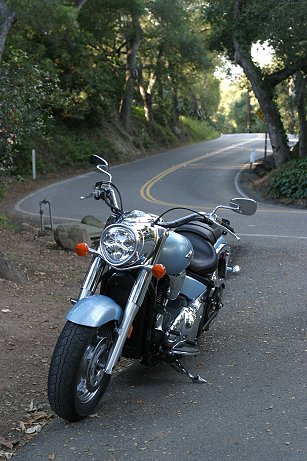
Pulling away from a stop for the first time, the Vulcan 2000 felt surprisingly controlled . . . tame, even. That is, until you have some room to let the bike stretch its legs a bit. Strong off the bottom, the Vulcan 2000 just keeps building forward momentum until your eyes get a bit wider and your mouth starts to form those words that you tend to say when you are overwhelmed about something . . . like the acceleration from an open-class sportbike. Only your surprise is even greater, because you are straddling a 750 pound cruiser with a wheelbase that seems as long as your pick-up truck, while your butt is only 27.2″ above the asphalt.
Then you try accelerating in the higher gears, such as fourth and fifth gears, and find out that the Vulcan 2000 doesn’t seem to care what gear you are in. The rate of acceleration seems identical to that found in first and second gears. I never had this sensation on another bike. It must have something to do with all that torque. Whatever it is, I like it very much.
While the pulse from 2053cc of v-twin seems to have most deeply affected my psyche, the engine is not the whole story here. Far from it. The Vulcan 2000 package is a good one, and that includes the ergonomics, chassis and handling.
That ultra low seat is firm, but comfortable. It is thoughtfully shaped, and proved a nice perch on a 150 mile day.
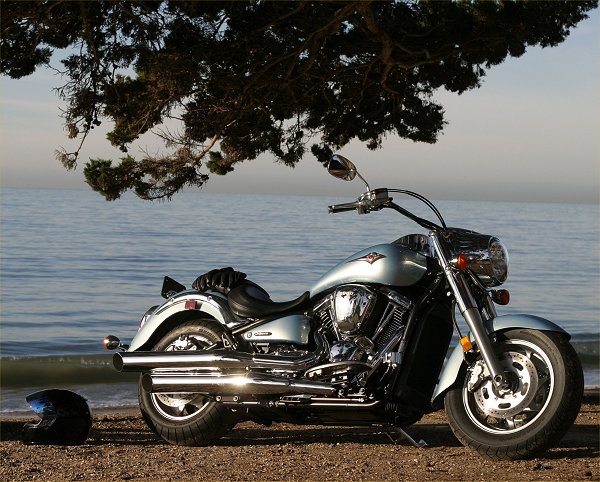
The bars and floorboards stretch you out a bit, as they must on bike this long and low, but seem to work well enough once you are used to operating the Vulcan 2000.
Long and low was a design brief from Kawasaki, and it does bring to bear some laws of physics that prevent this bike from handling like most standard motorcycles. You never forget how big and long the Vulcan 2000 is, but Kawasaki did a good job of achieving a level of nimbleness, nevertheless.

Lifting the Vulcan 2000 off its low side stand (too low, really) requires a fair amount of muscle. Like a Gold Wing with a broken reverse gear, you learn not to park the Vulcan 2000 face-in to a parking space with a downward slope. Maneuvering the bike at low speeds requires some deft use of the clutch and brake, as well.
Once underway, however, the Vulcan 2000 handles remarkably well. By experimenting with fork offset, rake and trail, Kawasaki came up with a very stable motorcycle that nevertheless steers with little effort on the wide bars.
Although I initially felt the Vulcan 2000 would run wide on corner exits, I eventually felt in tune with the bike’s handling, and found cornering a joy. Scraping the floorboards on both sides (the bike has about the same ground clearance you will find on most cruisers) became a common occurrence, without drama.
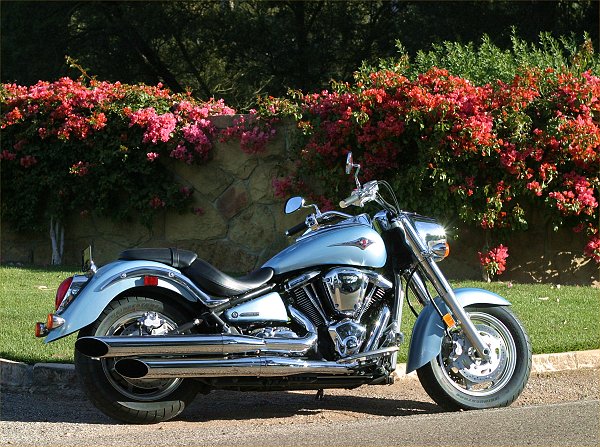

Things we didn’t like? First gear is too short. With this much torque, first gear seemed to disappear in an instant, with a bounce off the rev limiter. There is so much chrome over the headlight, cascading over the base of the handlebars, that the sun too frequently finds an angle to bounce into your eyes. Finally, as we mentioned earlier, the kickstand seems shorter than it needs to be, exaggerating the weight of the bike
We never got to ride the bike at night, so we can’t comment on the trick headlight (featuring three projector low beams, and a single high beam), but it is reportedly quite bright.
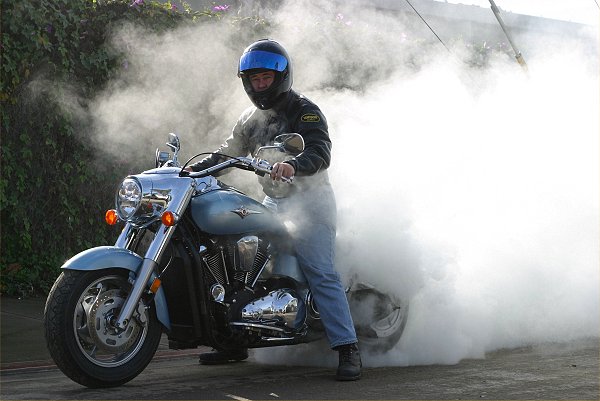
Although you will have to decide for yourself whether you like the look of the unique headlight, the Vulcan 2000 is an imposing presence, which is finely detailed, and well finished. From its massive 49mm forks to its 200mm rear tire, the Vulcan 2000 represents a flagship for Kawasaki. At a U.S. MSRP of $14,499, it is a lot of motorcycle in every sense. Production bikes should be at your dealer shortly. Take a look at Kawasaki’s web site for additional details and specifications.
| Yamaha Photo of the Day |





